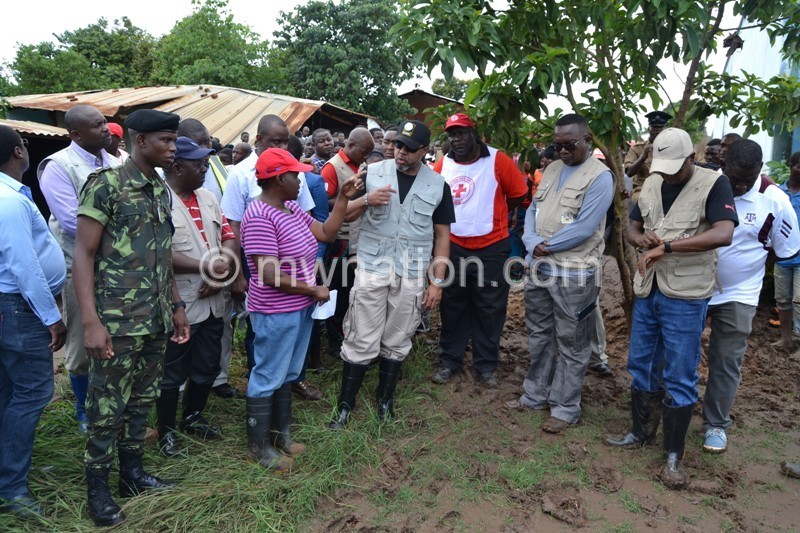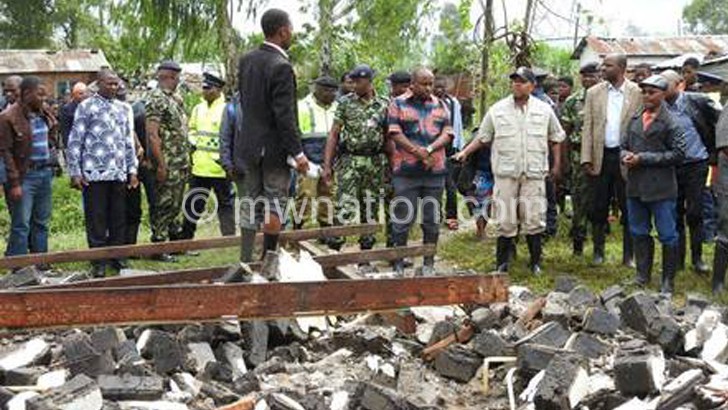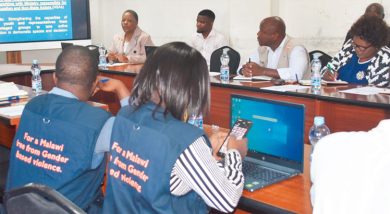Floods in cities: Case of negligence
Urban floods, which continue to cost lives and property, are a result of government’s failure to implement physical planning guidelines as cities face a high rate of illegal constructions in disaster-prone areas, Nation on Sunday has established.
According to city councils, most people affected by floods in cities constructed their structures in risky areas such as along river banks.

Councils say enforcement of the law against illegal settlers has always been a challenge due to lack of capacity.
About two weeks ago, floods swept away houses, bridges and roads in Lilongwe, leaving a number of households, especially in places such as Kawale, Kaliyeka and Mchesi, homeless with six people confirmed dead.
This is the second-year running that the capital city has faced floods. Last year, floods devastated townships such as Areas 47 and 49.
Blantyre, Mzuzu and Karonga town were lso affected by floods, and in 2015, floods claimed about 10 lives in Blantyre.
But Mzuzu University town planning and development expert Mtafu Manda blames the challenge cities are facing on urbanisation and poor implementation of physical plans.
“The cities are growing rapidly and authorities are unable to provide land for housing. The city councils, Lands Department and Malawi Housing Corporation delay to provide plots in the right places at the right prices, and at the right times. People cannot wait for bureaucracy,” he said.
Lilongwe City Council (LCC) told Nation on Sunday that the floods are man-made because people have put up structures in undesirable places such as river banks.
The council said most of the affected areas were encroached on and that efforts to evict people from the ‘stolen land’ have often faced resistance from communities.

According to LCC directorate of planning and development officer Hastings Mumba, the council has issued over 1 000 notices—to have illegal housing demolished but to no avail.
“All those people the floods affected, we did not approve their developments. It is people who just grab the land, but now the good thing is that, on the side of the council, we have evidence that we have already served them with notices and the Area 49 case includes senior people who defied our order and in the end were affected by floods,” he said.
He bemoaned lack of cooperation from illegal householders to move out of the danger zones, saying the council has had running battles with people, especially in Mchesi and Kawale townships, which have a number of houses constructed along Lilongwe and Mchesi rivers.
He said just recently people encroached on a low-lying land behind Kamuzu Central Hospital, which lies along Lilongwe River, but the council had to use police to demolish the structures.
“Another problem is the weakness of the Town Planning Law, because the law says if you build illegally it asks you to use your own money to remove your illegal developments, it doesn’t say the city council should come and demolish we only demolish if you fail to do so after 30 days. So can you imagine how many people can use their money to demolish their own things?” Mumba added.
A Nation on Sunday tour of affected areas such as Mtandire, Kawale, Mchesi and Kaliyeka revealed that most of the affected places had houses constructed about five metres from the river banks, in extreme cases, while others were constructed 10 to 15 metres away.
Kawale based-Eliza Mbewe, a victim of the December 2017 floods, said she had to construct near the river bank because it was the only place she found.
But, she said, she is aware of the city’s notice to demolish their structure?
In Mzuzu, city authorities have failed to carry out a demolition exercise because of communities resistance.
The city’s director of planning and development Alexander Chirambo said illegal construction is widespread in the city’s residential, commercial and industrial sites.
He said the situation calls for political will to end the culture of lawlessness where people construct without approval.
Blantyre City Council (BCC) public relations manager Anthony Kasunda said the high urbanisation rate is fuelling encroachment.
According to Kasunda, encroachment in reserved areas such as Soche Hill remains a long standing concern to the council, which also faces resistance to deal with illegal dwellers.
He cited the recently vacated injunction obtained by some residents, restraining the council from demolishing structures and re-locating people from the encroached Soche Hill to safer grounds, as part of the resistance.
The BCC relocation plan comes barely days after Vice-President Saulos Chilima toured flood-prone areas in Blantyre, where he ordered the council to act swiftly in relocating residents from flood-prone areas.
Chilima expressed disappointment that people were still constructing houses along river banks, a case of Chimwankhunda and Ndirande which were also hit with flashfloods in January 2015.





